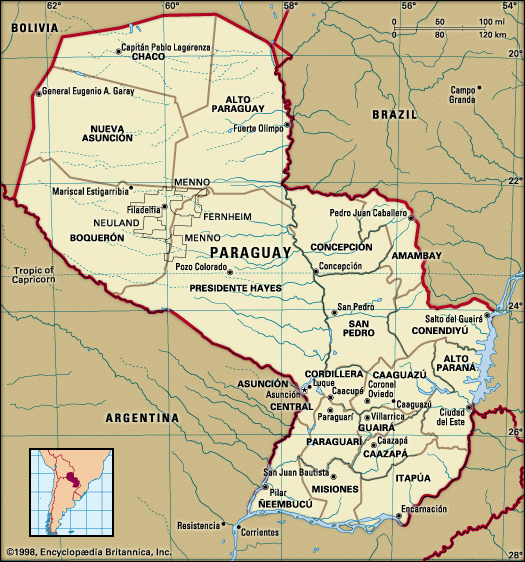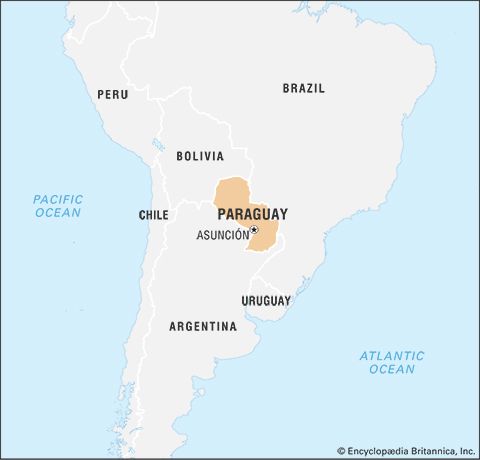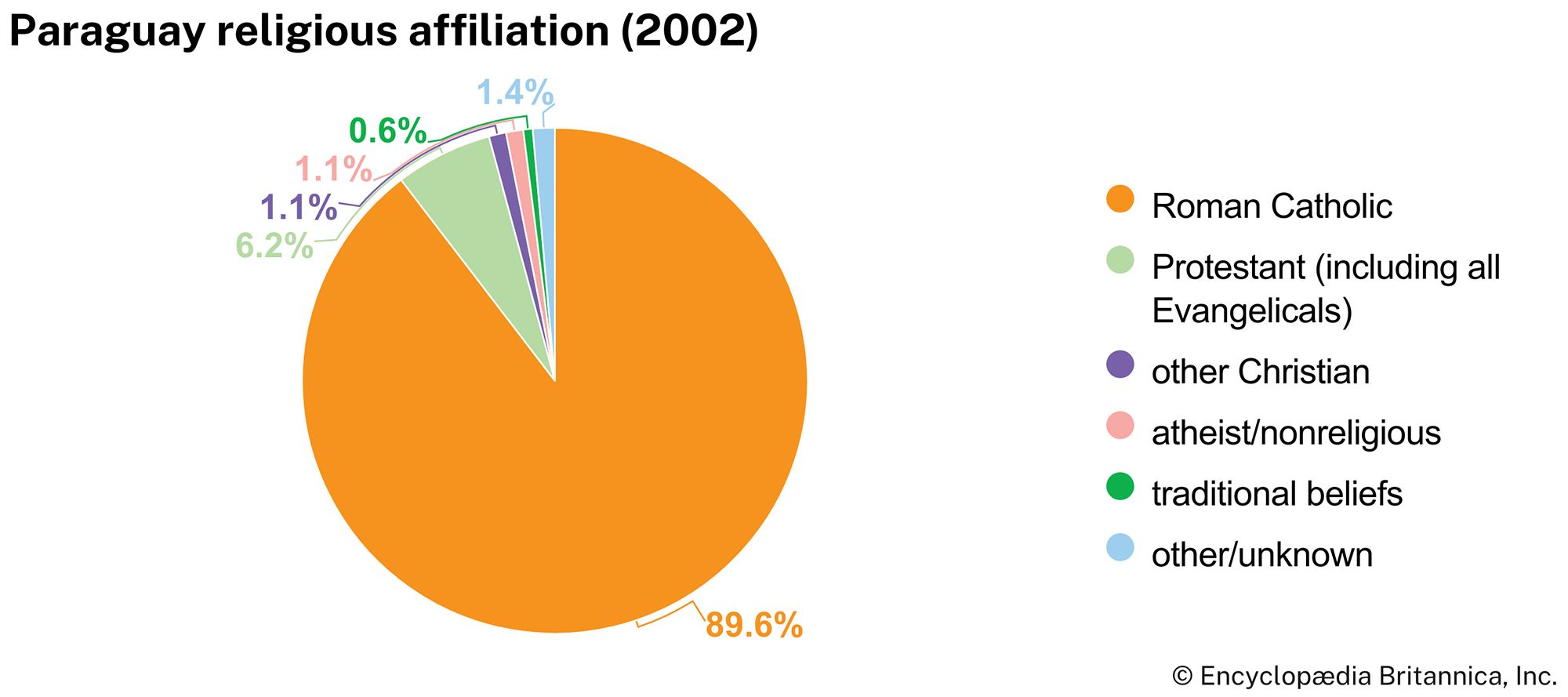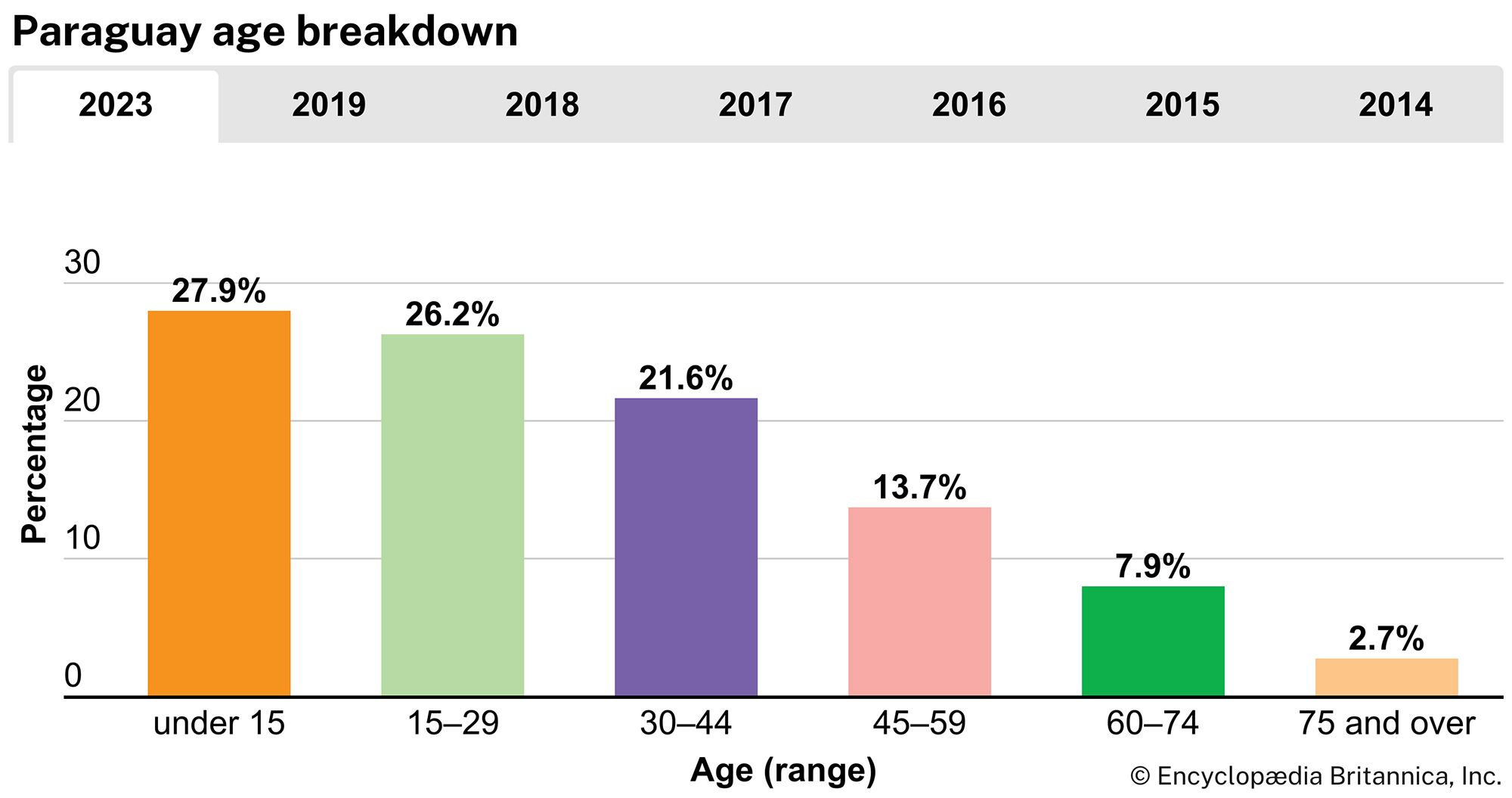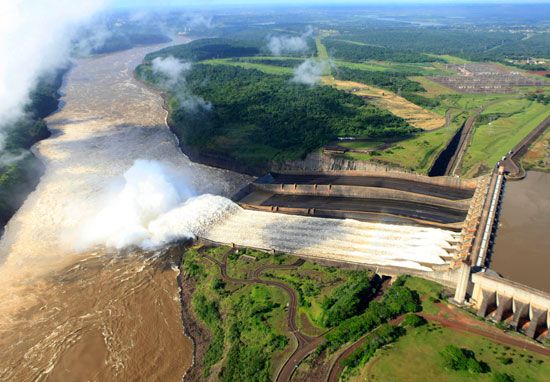Paraguay
News •
Paraguay, landlocked country in south-central South America. Paraguay’s recent history has been characterized by turbulence and authoritarian rule. It was involved in two of the three major wars on the continent—the War of the Triple Alliance (1864/65–70), against Argentina, Brazil, and Uruguay, and the Chaco War (1932–35), against Bolivia. Moreover, a civil war in 1947 and the long dictatorship of Alfredo Stroessner (1954–89) left a deep legacy of fear and self-censorship among Paraguayans, who began to overcome those impediments only in the early 21st century. Since 1989 the democratization process has been rocky, and Paraguay has experienced bouts of instability in its military, the assassination of a vice president in 1999, and the indictment of former presidents Juan Carlos Wasmosy (1993–98) and Luis González Macchi (1999–2003) on corruption charges. In 2008 Paraguay’s Colorado Party, one of the longest continuously ruling political parties in the world, lost power for the first time since 1947, though it returned to power in 2013. The national capital is Asunción.
Paraguay has a more-homogeneous population than most other countries in South America; most Paraguayans are of European and Guaraní ancestry. The Guaraní culture is strongly represented through folk art and festivals, and Guaraní was designated an official language of Paraguay in the country’s 1992 constitution. Paraguayans are intensely nationalistic and are proud to converse in Guaraní, which acts as a strong marker of their identity. That indigenous language is much more widely spoken in Paraguay than is Spanish, which is unique in Latin America.
- Also Known As:
- Tetä Paraguáype
- Republic of Paraguay
- República del Paraguay
- Head Of State And Government:
- President: Mario Abdo Benítez
- Capital:
- Asunción
- Population:
- (2024 est.) 6,193,839
- Form Of Government:
- multiparty republic with two legislative houses (Chamber of Senators [451]; Chamber of Deputies [80])
- Official Languages:
- Spanish; Guaraní
- Official Religion:
- none2
- Official Name:
- República del Paraguay (Spanish); Tetä Paraguáype (Guaraní) (Republic of Paraguay)
- Total Area (Sq Km):
- 406,752
- Total Area (Sq Mi):
- 157,047
- Monetary Unit:
- guaraní (plural guaranies)
- Population Rank:
- (2023) 105
- Population Projection 2030:
- 8,009,000
- Density: Persons Per Sq Mi:
- (2024) 39.4
- Density: Persons Per Sq Km:
- (2024) 15.2
- Urban-Rural Population:
- Urban: (2023) 63.3%
- Rural: (2023) 36.7%
- Life Expectancy At Birth:
- Male: (2022) 72.2 years
- Female: (2022) 78.1 years
- Literacy: Percentage Of Population Age 15 And Over Literate:
- Male: (2020) 95%
- Female: (2020) 94%
- Gni (U.S.$ ’000,000):
- (2022) 40,137
- Gni Per Capita (U.S.$):
- (2022) 5,920
- Excludes former presidents serving as senators-for-life but having no voting power.
- Roman Catholicism, though not official, enjoys special recognition in the constitution.
Rivers play an extremely important role in the economic life of Paraguay. Indeed, the name of the country is said to derive from the Guaraní word meaning “river that gives birth to the sea.” Rivers provide access to the Atlantic Ocean and serve as sites for the hydroelectric power plants that have made Paraguay one of the world’s largest exporters of hydropower. The country is also a major world producer of soybeans, and Paraguayans in parts of the fertile eastern border region have achieved relatively high standards of living based on modern diversified agricultural production. The growth of cooperative farms throughout Paraguay has increased the quality of life for many farmers who previously had depended on small-scale farms dedicated to the cultivation of a single crop. Nevertheless, the issue of land reform has remained unresolved since the 1880s and has given rise to extreme levels of inequality since the 1990s.


